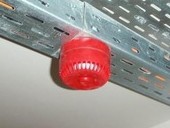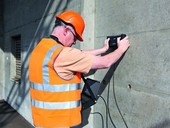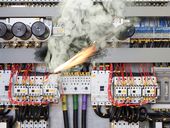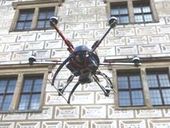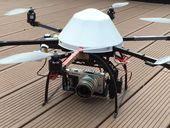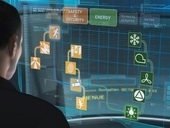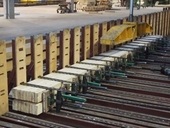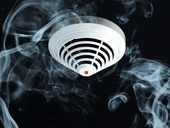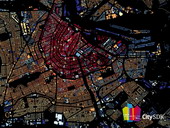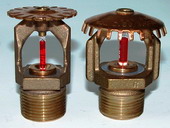This article contains a description of the fire detection and fire alarm system, as a part of the overall fire protection equipment of a buildings facilities and technology amenities; including principles of its design, installation and operation.
Archiv článků od 8.2.2016 do 10.10.2016
Checking the inner shell of tunnels during the construction phase as well as of existing tunnels is importand for their safe operation. Various non-destructive methods have been developed for this, which allow the control check to be carried out with experiences which were obtained using the new device, pased on an ultrasonic pulse echo method.
Emergency lighting is one of the most important species of fire safety equipment which determine the fire safety of buildings or other facilities. Emergency lighting is established for use in the event of failure of normal artificial lighting and is therefore supplied from the second independent source. Properly designed, highly functional and operational installation of emergency lighting is essential to ensure a quick and safe escape of people in case of emergency.
The annual total losses caused by fires in the Czech Republic (direct and indirect) are not negligible. The total amount of these damages is to a large extent also involved in fires caused by the operation of electrical wiring and equipment. In terms of fire protection in these cases remains a key issue rate of compliance with fire safety requirements in design, construction, and especially in the operation of these facilities. Currently, in addition to the system of Czech technical standards implemented a lot of new European standards which transpose the international requirements for testing, design, operation and maintenance of electrical wiring and equipment, which requires often the direct modification of existing CSN, in those parts which are contrary thereto. This situation logically caused societal need to address this issue in order to protect public interests, and comprehensively, using available European technical documents, specifications and national standards of EU member states, according to the current state of science and technology.
The article is focused on ambivalent features of systems intelligent building management from the obligatory requests on fire safety point of view. It insists that reliable and functional detection is the basic predetermination to effective solution in fire case but it is not sufficient to the total fire protection provision. The complex solution of the problematics involves many further steps and provisions of both, technical and organizational character.
Presented text discusses the use of RPAS (Remotely Piloted Aerial System) in the building industry and heritage preservation. It provides information of various case studies and shows examples. For the purposes of building industry and technological area monitoring multicopter systems are mainly used. They have more complex control, but they can be successfully navigated in very low heights and low speeds around and above the object. Safe handling and ensuring the area after agreement with the owner or facility manager is crucial for their use.
Presented text discusses RPAS (Remotely Piloted Aerial System) in terms of history, legislation and its possible use especially in the civil sector. RPAS, often called UAV / UAS or “drones” in slang are a phenomenon of recent years. They present modern and popular technology that has undergone an unprecedented boom thanks to miniaturization of electronics, control and navigation equipment, high-performance battery development as well as individual components now available for affordable prices. Safe manipulation and current limits of applicability are indispensable and must be taken into account.
In late 2014 Photon Energy commissioned a unique solar PV storage project in Australia. Instead of feeding energy into the grid, the 39 kWp / 215 kWh power plant powers a radio broadcast tower. This article explains in detail the set-up of the hybrid PV system, which was designed to prove that renewables can be used for on-site production even for demanding customers. Which technology was used and why? After one year the authors examine production data to evaluate the system’s performance.
At the TZB-info appeared article "Smart grid is like yetti, nobody has ever seen him, however we can use the CRC" (collective remote control). There is czech pride on CRC present in the headline as well as scorn towards smart platforms in the energetics. Is the problem really black and white? Can CRC offer the same as smart metering? Are the Czechs ahead of time?
The paper describes a system of FBG (Fiber Bragg Grating) sensors and their integration into the beams of glued laminated timber for continuous monitoring and diagnostics of mechanical stress in building structures. The possibility of gluing the optical fibers into the timber structure and influence on manufacturing process of glued laminated timber on the glued fibers is studied. Laboratory tests including mechanical loading of examined samples were carried out to verify the correct operation of the sensors. Based on the measurement, a timber beam with embedded FBG sensors for the monitoring of the real construction have been manufactured.
The active fire safety devices, by which are in the contribution meant especially electric fire alarms, stabile fire extinguishing means and devices for smoke and heat removal, are an important part of building security systems. For the proper function of these systems it is necessary to pay attention to the priority how to put into operation the particular device, their coordina tion and interaction between them.
The principles of the prioritizing how to put into the operation the individual active fire safety devices are described on the basis of the reasons for the devices installation and their priority or eventually secondary protection targets. The attention is paid also to the coordina tion of the fire safety means.
The aim of the article is to provide several concrete solutions and applications of Smart Cities that are already being applied in the world and try to describe their contribution to urban residents. We focus on the first two of the six key areas of Smart City – Smart Government and Smart Transportation.
Each technology equipping today's modern buildings, facilities or campuses, provides a variety of operational data - alarms, status variables and operating parameters, which can effectively help in managing their operations. Therefore it is absolutely logical step to focus them into one unified graphical environment.
Each technology equipping today's modern buildings, facilities or campuses, provides a variety of operational data - alarms, status variables and operating parameters, which can effectively help in managing their operations. Therefore it is absolutely logical step to focus them into one unified graphical environment.
At present, it is establishing the second edition of the standard ČSN 33 2000-7-753: Low-voltage electrical installations – Part 7-753: Requirements for special installations or locations – Heating cables and embedded heating systems, which already includes other requirements associated with this type of heating, generalized for any use.
At present, it is establishing the second edition of the standard ČSN 33 2000-7-753: Low-voltage electrical installations – Part 7-753: Requirements for special installations or locations – Heating cables and embedded heating systems, which already includes other requirements associated with this type of heating, generalized for any use.
zpět na aktuální články
